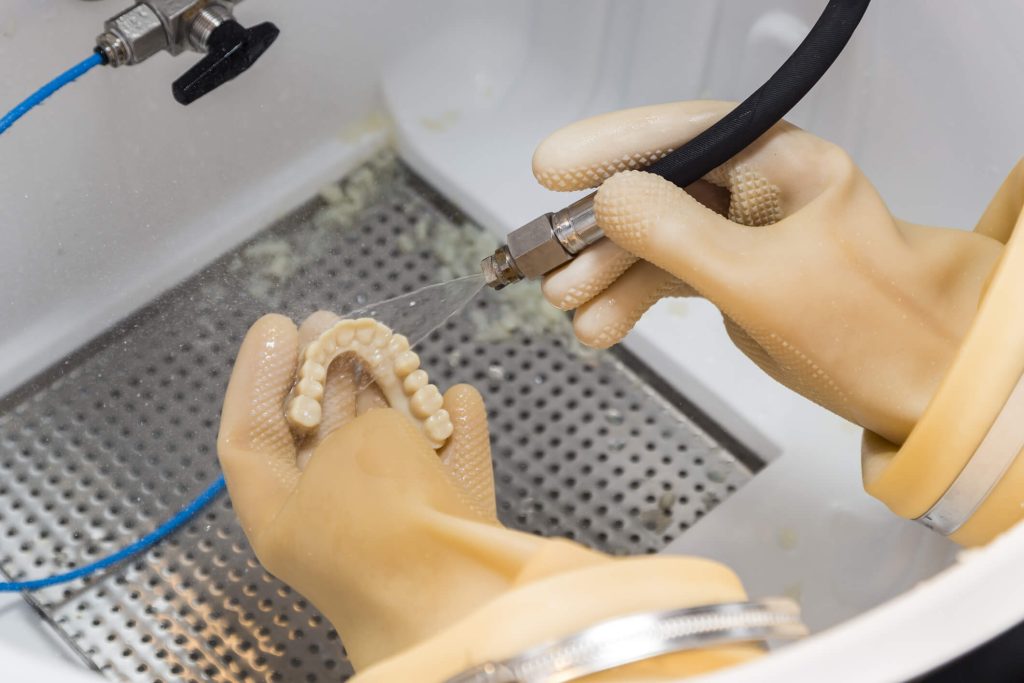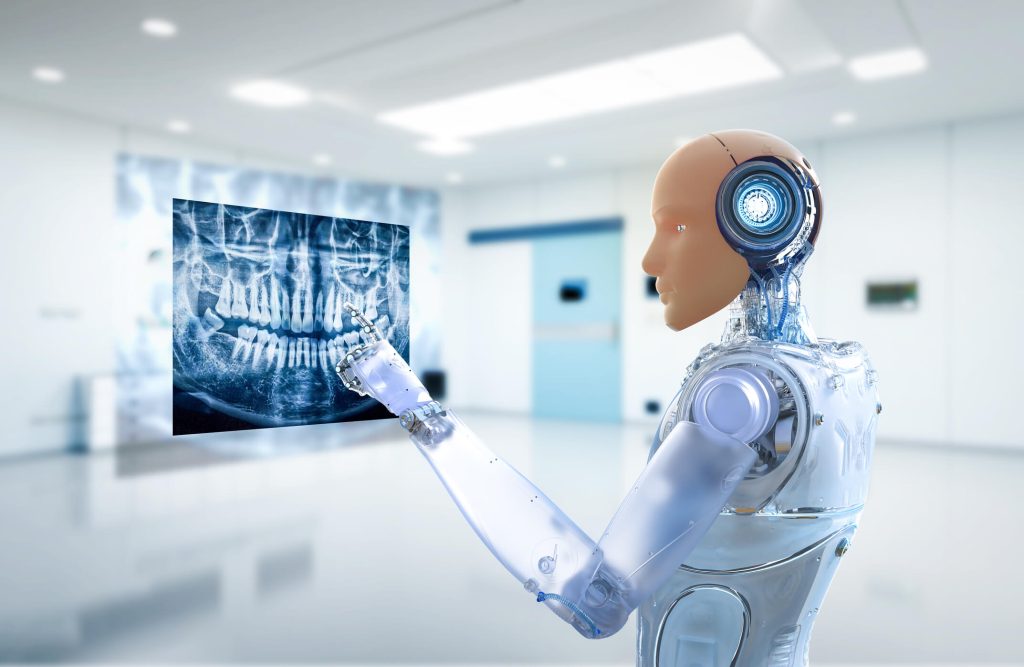By alphacardprocess March 20, 2024
The field of dentistry has witnessed significant advancements in recent years, thanks to the rapid pace of technological innovation. These innovations have revolutionized the way dental professionals diagnose, treat, and care for their patients. From 3D printing to artificial intelligence, the dental industry is embracing cutting-edge technologies that are transforming the way dental procedures are performed and improving patient outcomes.
In this article, we will explore the top innovations that are changing the dental industry and discuss their impact on dental practices and patient care. We will delve into the evolution of dental technology and explore how 3D printing, artificial intelligence, laser dentistry, digital dentistry, nanotechnology, tele-dentistry, robotics, and virtual reality are reshaping the dental landscape. Additionally, we will address frequently asked questions about these innovations and discuss their accessibility to dental practices.
Innovations That are Changing the Dental Industry
Over the years, dental technology has evolved significantly, enabling dental professionals to provide more accurate diagnoses, precise treatments, and improved patient care. From the early days of traditional dental tools to the current era of digital dentistry, the field has come a long way.
Advancements in imaging technology, such as digital radiography and cone-beam computed tomography (CBCT), have revolutionized the way dental professionals visualize and diagnose dental conditions. These technologies provide high-resolution images that allow for better detection of dental issues, leading to more accurate treatment planning.
Furthermore, the integration of computer-aided design and computer-aided manufacturing (CAD/CAM) systems has transformed the way dental restorations are fabricated. With CAD/CAM technology, dental professionals can create precise and customized dental prosthetics, such as crowns, bridges, and veneers, in a fraction of the time it would take using traditional methods.
3D Printing in Dentistry: Revolutionizing Dental Prosthetics

One of the most significant innovations in the dental industry is the use of 3D printing technology. 3D printers have revolutionized the fabrication of dental prosthetics, making the process faster, more accurate, and more cost-effective.
With 3D printing, dental professionals can create highly precise dental models, surgical guides, and even complete dentures. This technology allows for the customization of dental prosthetics to fit each patient’s unique anatomy, resulting in improved comfort and aesthetics.
Moreover, 3D printing enables dental laboratories to produce dental prosthetics in-house, eliminating the need for outsourcing and reducing turnaround times. This not only improves efficiency but also allows for better quality control throughout the fabrication process.
According to a report by Research and Markets, the global dental 3D printing market is expected to reach $6.5 billion by 2025, driven by the increasing demand for customized dental prosthetics and the growing adoption of digital dentistry.
Artificial Intelligence in Dentistry: Enhancing Diagnosis and Treatment Planning

Artificial intelligence (AI) is another game-changing innovation in the dental industry. AI algorithms can analyze vast amounts of dental data, including patient records, radiographs, and clinical notes, to assist dental professionals in making more accurate diagnoses and treatment plans.
AI-powered software can detect patterns and anomalies in dental images, helping dentists identify early signs of dental diseases, such as cavities, gum disease, and oral cancer. This early detection can lead to timely interventions and improved patient outcomes.
Furthermore, AI algorithms can assist in treatment planning by simulating different treatment options and predicting their outcomes. This allows dental professionals to choose the most suitable treatment approach for each patient, considering factors such as aesthetics, functionality, and longevity.
A study published in the Journal of Dental Research found that an AI algorithm developed by researchers at the University of California, Los Angeles, outperformed human dentists in detecting cavities on dental X-rays. The algorithm achieved an accuracy rate of 94%, compared to 91% for human dentists.
Laser Dentistry: A Minimally Invasive Approach to Dental Procedures

Laser dentistry is gaining popularity as a minimally invasive alternative to traditional dental procedures. Dental lasers use concentrated beams of light to remove or reshape tissue, offering several advantages over conventional methods.
One of the key benefits of laser dentistry is its precision. Dental lasers can target specific areas of the mouth without affecting the surrounding healthy tissue, resulting in less pain, bleeding, and swelling. This makes laser procedures more comfortable for patients and reduces the need for anesthesia in many cases.
Additionally, dental lasers promote faster healing and reduce the risk of infection. The high-energy light beams used in laser dentistry sterilize the treatment area, minimizing the chances of bacterial contamination and accelerating the healing process.
Laser dentistry is used in a wide range of dental procedures, including cavity detection, gum disease treatment, tooth whitening, and soft tissue surgeries. According to a report by Grand View Research, the global dental lasers market is expected to reach $278.4 million by 2025, driven by the increasing adoption of minimally invasive dental procedures.
Digital Dentistry: Streamlining Workflows and Improving Patient Experience
Digital dentistry encompasses a wide range of technologies that digitize various aspects of dental practice, from patient records and imaging to treatment planning and communication. This digital transformation has streamlined workflows, improved efficiency, and enhanced the overall patient experience.
One of the key components of digital dentistry is the use of electronic health records (EHRs) and practice management software. These systems allow dental professionals to store and access patient information securely, eliminating the need for paper records and reducing administrative tasks.
Digital imaging technologies, such as intraoral scanners and CBCT, have also revolutionized the way dental professionals capture and analyze dental images. Intraoral scanners eliminate the need for messy impressions, while CBCT provides detailed 3D images for more accurate diagnoses and treatment planning.
Moreover, digital dentistry enables seamless communication between dental professionals and dental laboratories. Digital impressions can be sent electronically to dental technicians, reducing turnaround times and improving the accuracy of dental restorations.
According to a survey conducted by the American Dental Association, 89% of dental practices in the United States use digital radiography, and 73% use intraoral scanners. The adoption of digital dentistry is expected to continue to grow as more dental professionals recognize its benefits.
Nanotechnology in Dentistry: Advancements in Dental Materials and Treatments
Nanotechnology is making significant strides in the field of dentistry, offering new possibilities for dental materials and treatments. Nanomaterials, which are materials with structures at the nanoscale, exhibit unique properties that can enhance the performance of dental restorations and improve oral health outcomes.
One of the key applications of nanotechnology in dentistry is the development of nanocomposites for dental fillings. These materials have improved mechanical properties, such as higher strength and wear resistance, compared to traditional dental composites. They also release fluoride ions, which help prevent tooth decay and promote remineralization.
Furthermore, nanotechnology is being used to develop antimicrobial coatings for dental implants and orthodontic appliances. These coatings can inhibit the growth of bacteria, reducing the risk of infection and improving the longevity of dental restorations.
Nanoparticles are also being explored for targeted drug delivery in oral healthcare. By encapsulating drugs in nanoparticles, dental professionals can deliver medications directly to the affected area, improving treatment efficacy and minimizing side effects.
A study published in the Journal of Dental Research found that a nanocomposite material containing nanoparticles of silver and calcium phosphate exhibited superior antibacterial properties compared to traditional dental composites.
Tele-dentistry: Expanding Access to Dental Care
Tele-dentistry is a rapidly growing field that leverages telecommunications technology to provide dental care remotely. This innovation is particularly valuable in underserved areas where access to dental services is limited.
Tele-dentistry enables dental professionals to diagnose and treat patients through video consultations, eliminating the need for in-person visits. Patients can connect with dentists using their smartphones or computers, allowing for convenient and timely access to dental care.
This technology is especially beneficial for patients who live in rural or remote areas, where dental clinics may be scarce. It also provides a solution for individuals with mobility issues or those who have difficulty traveling to dental appointments.
Tele-dentistry can be used for a wide range of dental services, including oral health assessments, consultations, and follow-up appointments. Dental professionals can remotely examine patients’ oral health, provide treatment recommendations, and even prescribe medications when necessary.
According to a study published in the Journal of the American Dental Association, tele-dentistry has been shown to improve access to dental care, reduce travel time and costs for patients, and increase patient satisfaction.
Robotics in Dentistry: Automating Dental Procedures for Precision and Efficiency
Robotics is making its way into the dental industry, offering the potential to automate dental procedures and improve precision and efficiency. Robotic systems can assist dental professionals in various aspects of dental care, from surgical procedures to orthodontic treatments.
One of the key applications of robotics in dentistry is in dental implant surgeries. Robotic systems can assist in the placement of dental implants with high precision, ensuring optimal positioning and stability. This reduces the risk of complications and improves the success rate of implant procedures.
Furthermore, robotics can be used in orthodontics to automate the process of tooth movement. Robotic systems can apply controlled forces to teeth, allowing for more precise and predictable tooth alignment. This can reduce the duration of orthodontic treatment and improve treatment outcomes.
Robotic systems can also assist in other dental procedures, such as root canal treatments and tooth extractions. By automating certain aspects of these procedures, robotics can enhance precision, reduce the risk of human error, and improve patient safety.
While the adoption of robotics in dentistry is still in its early stages, several companies are developing robotic systems specifically designed for dental applications. As the technology continues to advance, we can expect to see more widespread use of robotics in dental practices.
Virtual Reality in Dentistry: Reducing Dental Anxiety and Enhancing Patient Education
Dental anxiety is a common issue that affects many patients, often leading to delayed or avoided dental visits. Virtual reality (VR) technology is emerging as a promising solution to reduce dental anxiety and enhance patient education.
VR technology immerses patients in a virtual environment, distracting them from the dental procedure and reducing anxiety. By wearing a VR headset, patients can be transported to a relaxing and engaging virtual world, such as a beach or a forest, while receiving dental treatment. This distraction technique has been shown to significantly reduce anxiety levels and improve patient comfort.
Moreover, VR can be used as an educational tool to help patients understand their dental conditions and treatment options. Dental professionals can use VR simulations to explain complex procedures, such as dental implant placement or orthodontic treatment, in a visual and interactive manner. This enhances patient understanding and engagement, leading to better treatment outcomes.
A study published in the Journal of Medical Internet Research found that patients who used VR during dental treatment reported significantly lower anxiety levels compared to those who did not use VR. The study also showed that VR improved patient satisfaction and reduced the need for sedation.
FAQs:
FAQ 1: How do 3D printers benefit the dental industry?
3D printers have revolutionized the dental industry by enabling the fabrication of highly precise and customized dental prosthetics. They eliminate the need for outsourcing, reduce turnaround times, and improve quality control. 3D printing also allows for the creation of complex dental models and surgical guides, enhancing treatment planning and outcomes.
FAQ 2: How is artificial intelligence used in dental diagnosis?
Artificial intelligence algorithms can analyze dental data, such as patient records and radiographs, to assist in diagnosing dental conditions. AI-powered software can detect patterns and anomalies in dental images, helping dentists identify early signs of dental diseases. This early detection can lead to timely interventions and improved patient outcomes.
FAQ 3: What are the advantages of laser dentistry?
Laser dentistry offers several advantages over traditional dental procedures. Dental lasers are precise, targeting specific areas without affecting the surrounding healthy tissue. This results in less pain, bleeding, and swelling, making laser procedures more comfortable for patients. Laser dentistry also promotes faster healing and reduces the risk of infection.
FAQ 4: How does digital dentistry improve patient experience?
Digital dentistry improves patient experience by streamlining workflows and reducing administrative tasks. Electronic health records and practice management software eliminate the need for paper records and improve data security. Digital imaging technologies, such as intraoral scanners, eliminate the need for messy impressions. Seamless communication between dental professionals and dental laboratories improves the accuracy and efficiency of dental restorations.
FAQ 5: What are the applications of nanotechnology in dentistry?
Nanotechnology has various applications in dentistry, including the development of nanocomposites for dental fillings with improved mechanical properties and remineralization capabilities. Nanotechnology is also used to develop antimicrobial coatings for dental implants and orthodontic appliances, reducing the risk of infection. Nanoparticles are being explored for targeted drug delivery in oral healthcare, improving treatment efficacy and minimizing side effects.
FAQ 6: How does tele-dentistry work?
Tele-dentistry enables dental professionals to provide dental care remotely through video consultations. Patients can connect with dentists using their smartphones or computers, eliminating the need for in-person visits. Tele-dentistry can be used for oral health assessments, consultations, and follow-up appointments. It improves access to dental care, reduces travel time and costs for patients, and increases patient satisfaction.
FAQ 7: What are the benefits of using robotics in dental procedures?
Robotics can automate dental procedures, improving precision and efficiency. Robotic systems can assist in dental implant surgeries, ensuring optimal positioning and stability. Robotics can also be used in orthodontics to automate tooth movement, reducing treatment duration and improving outcomes. Robotic systems can enhance precision, reduce the risk of human error, and improve patient safety in other dental procedures, such as root canal treatments and tooth extractions.
FAQ 8: How does virtual reality help reduce dental anxiety?
Virtual reality technology immerses patients in a virtual environment, distracting them from the dental procedure and reducing anxiety. By wearing a VR headset, patients can be transported to a relaxing and engaging virtual world while receiving dental treatment. This distraction technique has been shown to significantly reduce anxiety levels and improve patient comfort.
Conclusion
In conclusion, Innovations that are changing the dental industry is not just changing the way dental professionals diagnose, treat, and care for their patients; it’s also shaping a future where dental care is more accessible, efficient, and effective. As we look forward to the continued evolution of these technologies, it’s exciting to consider the possibilities they hold for further improving oral health and patient care worldwide.